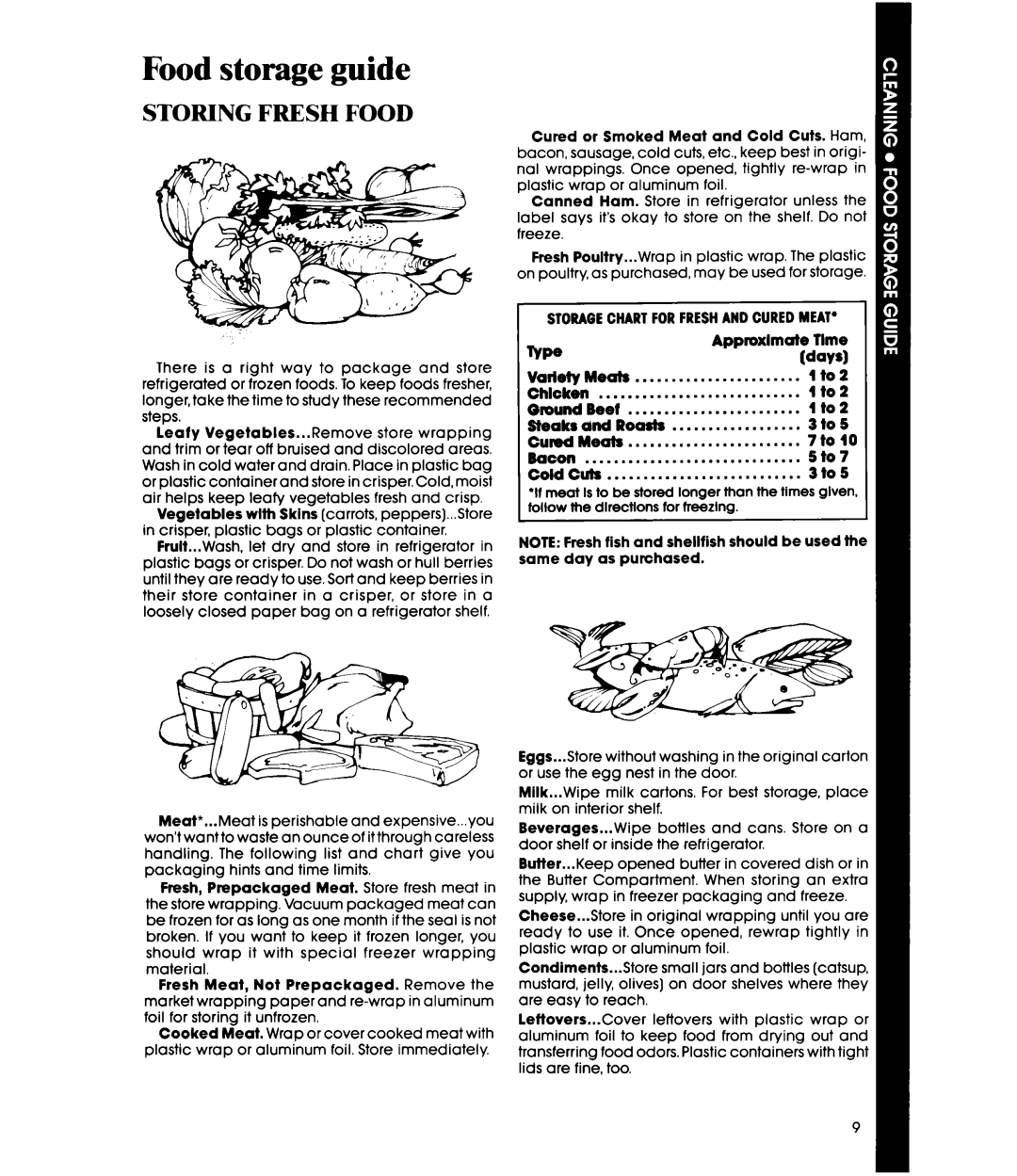ETl2NC specifications
The Whirlpool ETL2NC is a standout refrigerator that combines stylish design with practical functionality, making it an ideal choice for modern households. With its sleek exterior and innovative features, the ETL2NC offers users an efficient and convenient cooling solution.One of the main features of the ETL2NC is its spacious interior, which allows for optimal organization of food and beverages. The refrigerator includes adjustable shelves that provide flexibility for storing items of various sizes. Additionally, the fridge boasts a generous vegetable crisper, designed to maintain freshness while controlling humidity, ensuring that fruits and vegetables stay crisp for longer.
Incorporating advanced cooling technology, the ETL2NC features multi-airflow systems that ensure a consistent temperature throughout the refrigerator. This technology minimizes temperature fluctuations, allowing food to retain its flavor and texture. Furthermore, the refrigerator is equipped with a frost-free freezer, which prevents ice buildup and eliminates the need for manual defrosting, saving time and effort.
Energy efficiency is a hallmark of the Whirlpool ETL2NC, as it is designed to consume less energy while providing optimal cooling performance. This refrigerator is equipped with an Energy Star rating, assuring users that they are making an environmentally friendly choice that contributes to lower energy bills.
Noise levels are also a consideration when it comes to kitchen appliances, and the ETL2NC operates quietly, allowing for peaceful living and dining environments. The intelligent design not only includes a well-placed compressor but also incorporates insulation that reduces noise disturbances.
In terms of practical features, the ETL2NC includes LED lighting that illuminates the interior, making it easy to locate items even in low light. The door bins are designed for easy access, with specific compartments ideal for storing condiments and small items.
Durability is another key characteristic of the Whirlpool ETL2NC. It features a robust construction that withstands everyday wear and tear, ensuring longevity. The stainless steel finish not only adds to its aesthetic appeal but is also easy to clean, maintaining a pristine look in any kitchen setting.
In summary, the Whirlpool ETL2NC refrigerator combines a range of modern features, advanced technologies, and thoughtful design elements. Its energy efficiency, flexible storage options, and quiet operation make it a valuable addition to any household, offering both convenience and style. With the Whirlpool ETL2NC, fulfilling your refrigeration needs becomes a seamless experience.

